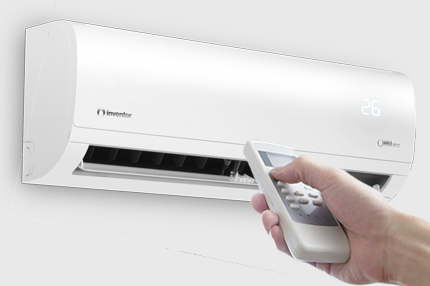As temperatures continue to rise due to global climate change, the demand for efficient and innovative cooling solutions is on the rise. In recent years, the field of air conditioning technology has seen remarkable advancements aimed at not only improving cooling efficiency but also reducing environmental impact. In this blog, we’ll delve into some of the latest developments in air conditioning technology, showcasing how these innovations are revolutionizing the way we keep our spaces comfortable while considering our planet’s well-being.
1. Variable Refrigerant Flow (VRF) Systems
Variable Refrigerant Flow (VRF) systems, also known as Variable Refrigerant Volume (VRV) systems, represent a significant advancement in air conditioning technology. They offer precise control over cooling and heating by adjusting the amount of refrigerant flowing to different zones within a building. This technology allows for simultaneous cooling and heating in different parts of a structure, resulting in remarkable energy savings and enhanced comfort. VRF systems are ideal for commercial and large residential spaces, where maintaining consistent temperatures in various areas is essential.
2. Smart and Wi-Fi-Enabled Air Conditioners
The Internet of Things (IoT) has infiltrated the realm of air conditioning, giving rise to smart and Wi-Fi-enabled air conditioners. These devices can be controlled remotely through smartphones or other internet-connected devices. They offer features like scheduling, adjusting temperature settings, and monitoring energy consumption from the convenience of your mobile device. This not only enhances convenience but also helps users make informed decisions to reduce energy consumption and save on utility bills.
3. Inverter Technology
Inverter technology has been a game-changer in the air conditioning industry. Unlike traditional air conditioners that start and stop the compressor to maintain the desired temperature, inverter air conditioners continuously adjust the compressor’s speed. This results in better temperature control and improved energy efficiency, as the system consumes less power during steady-state operation. Inverter technology is becoming increasingly popular for its ability to provide consistent comfort while conserving energy.
4. Eco-Friendly Refrigerants
The refrigerants used in air conditioners have been a significant concern due to their impact on global warming. Hydrochlorofluorocarbons (HCFCs) and hydrofluorocarbons (HFCs) are common refrigerants that have high Global Warming Potential (GWP). In response to environmental concerns, the industry is shifting towards more eco-friendly alternatives. One example is R-32, which has a lower GWP than older refrigerants, making it a greener choice. Additionally, some systems are now using natural refrigerants like hydrocarbons and ammonia, which have minimal environmental impact.
5. Dual-Stage Compressors
Dual-stage compressors are a recent innovation that allows air conditioners to operate at two different capacities. During mild weather conditions, the compressor runs at a lower capacity, reducing energy consumption. As temperatures rise, the compressor switches to its higher capacity mode to ensure that the desired temperature is maintained. This technology helps strike a balance between energy efficiency and optimal cooling performance.
6. Ductless Mini-Split Systems
Ductless mini-split systems have been gaining popularity for their flexibility and energy efficiency. These systems consist of an outdoor unit and one or more indoor air handlers that can be installed in different rooms or zones. They eliminate the need for extensive ductwork, reducing energy loss and allowing for individual temperature control in various areas of the home. Ductless mini-split systems are a great solution for older homes, room additions, or areas where traditional ducted systems are impractical.
7. Heat Recovery Systems
Heat recovery systems are a relatively new development in the air conditioning industry. These systems capture and reuse waste heat generated during the cooling process for other purposes, such as heating domestic water or preheating incoming fresh air. By harnessing heat that would otherwise go to waste, heat recovery systems significantly improve energy efficiency and reduce operating costs.
8. Solar-Powered Air Conditioners
As the world embraces renewable energy sources, solar-powered air conditioners are emerging as an environmentally friendly solution. These systems use solar panels to generate electricity, which is then utilized to power the air conditioner. During peak cooling demand on hot sunny days, these systems can operate efficiently, reducing the load on the electrical grid and minimizing utility bills.
Conclusion
The air conditioning industry is continually evolving to meet the challenges of an increasingly warming world. The latest advancements in air conditioning technology aim to provide comfort and convenience while minimizing the impact on the environment and reducing energy consumption. As we look toward a more sustainable future, these innovations play a crucial role in addressing both the need for cooling and the imperative of reducing our carbon footprint. By staying informed about these developments, consumers can make choices that benefit their comfort and the planet.

